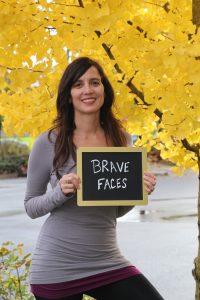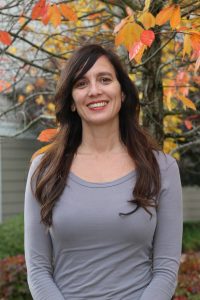 When Dr Jewell’s team asked me to write a blog post to share on their website about my experience going through a breast cancer diagnosis, I jumped at the chance to use this opportunity to share some important things I learned about this process that aren’t readily available online.
When Dr Jewell’s team asked me to write a blog post to share on their website about my experience going through a breast cancer diagnosis, I jumped at the chance to use this opportunity to share some important things I learned about this process that aren’t readily available online.
I was diagnosed with invasive ductal carcinoma (IVC) in early 2016 (around 80% of all breast cancers fall in this category). In simple terms, IDC is cancer that has broken through the wall of the milk duct and begun to invade the tissues of the breast.
I’m an entrepreneur who thrives on solving challenging problems, but this time I knew I was out of my league. I channeled my fear into curiosity and delved into learning as much as I could about this disease. I quickly learned it depends on the source of the material you read what you learn, so I combined my research to include various medical websites, personal blogs, private support groups (both on- and off-line) as well as speaking with other women who had received the same diagnosis.
I learned how important it was that once I made a decision about my care, I’d sleep on it to make sure I felt the same way the next day. This helped avoid making knee-jerk decisions or feeling influenced by medical professionals. For me, it came down to two choices: a lumpectomy with targeted radiation (and potentially chemotherapy) or opt for a bilateral mastectomy with reconstruction (and potentially chemotherapy). What determined whether or not I’d need chemo was dependent upon the results of testing my cancer tumor (once removed) as well as whether or not the cancer had spread into my lymph system.
The tumor test was called Oncotype DX, a genomic test that analyzes the activity of a group of genes that can affect how a cancer is likely to behave and respond to treatment. Fortunately, my Oncotype DX score was low enough that I did not require chemotherapy. My general surgeon also removed 2 lymph nodes under my right arm (my tumor was on the outside of my right breast, near my armpit) and those fortunately tested negative for cancer. This was the most exciting news for me because chemo scared me more than the idea of having a cancerous tumor cut from my body and removing my breast tissue.
My oncologist also recommended I get genetic testing to determine whether or not I had one of the BRCA genes or other genes that increase risk of breast cancer. The results of my genetic testing affirmed my decision to opt for the bilateral mastectomy. I was told my ATM gene is mutated, which means an increased risk of breast and pancreatic cancers. Since this gene is abnormal it stops my cells from repairing damaged DNA. I had never heard of this gene before, so again – I took to the Web to do some research. Here is a good overview of ATM gene mutation if anyone else receives this news.
One final thing I realized that helped me make my decision to have the bilateral mastectomy was to meet with a plastic surgeon – and not just any plastic surgeon. I wanted someone who was extremely skilled, had a great reputation and office culture, cared about women’s health and had an excellent bedside manner. I asked other surgeons who they’d recommend, read reviews about the surgeons recommended and scheduled time to meet with the ones I was interested in. The reason this was so important is because I learned if I would have opted for the lumpectomy with radiation, then had a recurrence of the cancer down the road, it would be more challenging for a plastic surgeon to do reconstruction and have a desired cosmetic outcome. This is because the radiation can cause issues – for example, potentially developing capsular contracture, a tightening of scar tissue around the implant that can harden the breast and distort its shape. I would not have known this information if I hadn’t meet with Dr. Jewell.
It was important for me to have all the facts and be able to examine the potential outcomes associated with both surgeries. And choosing the right medical team who would help me examine all the angles associated with my diagnosis was key. For me, it was easy to choose Dr. Jewell as my plastic surgeon. Here are the reasons why:
- He and his staff helped me feel comfortable during my initial consultation. I was nervous going into a plastic surgeon’s office because I was worried how they’d treat a breast cancer patient requiring reconstruction vs a woman desiring breast augmentation. Jewell and his team always handled our interactions with grace and professionalism. I never felt uncomfortable once during my treatment and healing process.
- I asked a lot of questions and challenged some things Dr Jewell and his team told me. Not only did they not get frustrated with me, but Dr Jewell told me that by me asking him questions helps him to be a better surgeon. I loved hearing that!
- Dr Jewell has created a culture of “excellence” and it’s clear from the minute you enter his office that they live up to this mantra. Every step of the way I felt like I was in excellent and caring hands.
- Dr Jewell also cares about innovating new technologies to continue improving upon techniques used in plastic surgery. Jewell has developed numerous innovations in how plastic surgery is practiced today. He’s also a key opinion leader and clinical researcher in how new products and devices are being brought to the market in order to improve patient outcomes and safety. Knowing he’s passionate about innovation and finding ways to continue to improve outcomes for women was a key reason why I chose him as my plastic surgeon.
 Thank you Dr. Jewell and Team for sharing your gifts, talents and passions with me during this challenging healthcare journey in my life.
Thank you Dr. Jewell and Team for sharing your gifts, talents and passions with me during this challenging healthcare journey in my life.
– Caroline Cummings


Leave a Reply